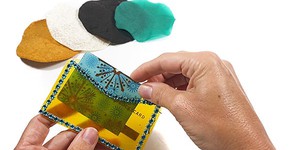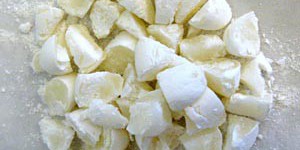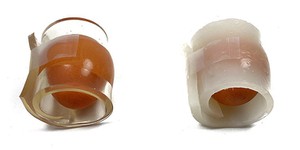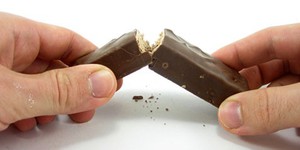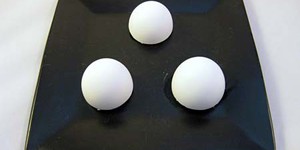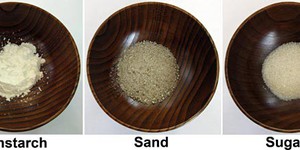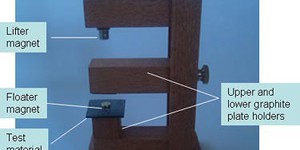Materials Science Science Projects (37 results)
Materials science is a fascinating area of research that is often at the cutting edge of science and engineering. It involves both developing new materials and improving on existing ones, and has important applications both for improving daily life and for advancing other fields of research. You can try your hand at making and testing all kinds of substances from plastic to slime.
|
Select a resource
Sort by
|
What should you NOT forget when going outside on a sunny day? To put sunscreen on! Sunscreen is important because it protects your skin from sunburn. But there are so many sunscreens to choose from: different methods of application (sprays and lotions), different Sun Protection Factors (SPFs), and different ingredients. Which one is best? In this science project, you will test the effectiveness of different sunscreens and find out how water-soluble they are.
Read more
Featured
Have you heard that garlic powder is supposed to inhibit the growth of bacteria? Which do you think would make a better disinfectant: a solution of garlic powder or a solution of bleach? This project shows you a straightforward way to compare the effectiveness of different disinfectants (or other antimicrobial agents), by measuring zones of inhibition on a culture plate.
Read more
Can you imagine clothing, handbags, or shoes made from seaweed or spider silk? To become more sustainable, the textile industry is looking for ways to develop more eco-friendly fabrics. Biofabrics derived from living organisms such as seaweed or bacteria have been proposed as a potential alternative to conventional fibers. In this science project, you will make several biofabrics from alginate (seaweed) and conduct tests to find out which one is most suitable as a textile replacement.
Read more
New
Have you ever noticed that on a hot day, it's more comfortable to wear a light-colored shirt than a dark one? Or that it's cooler in a park than walking down a street? This happens because different surfaces absorb and reflect heat in different ways. Urban heat islands are parts of cities where man-made surfaces like pavement and buildings replace natural surfaces like grass and trees. In this project, you will use temperature and satellite data to see if certain areas in a city have higher…
Read more
You have probably seen it on You Tube™ — the exploding Coke® and Mentos®
experiment. But what is it that makes the reaction happen, and what factors cause a larger or smaller
eruption? In this science project, you will see if using crushed
Mentos candies, instead of whole Mentos candies, will affect the reaction.
Read more
Many foods, such as fresh fruits, vegetables, or eggs, are packaged in plastic to protect them from damage during handling and transport. But is plastic the best choice? What if a more sustainable and biodegradable material could replace it? Researchers have begun exploring hydrogels—squishy materials that can hold a lot of water—as alternative packaging materials. In this science project, you will make your own hydrogels from gelatin and cornstarch and investigate what ratio of…
Read more
Can you catch a bubble with your hands? What if you use another material, like a piece of paper or aluminum foil? Try this science project to find out which materials can catch a bubble without popping it.
Read more
New
Have you ever broken a candy bar in half to share with someone? Some might snap in half quite cleanly, but others might be gooey and flexible. If you stick a candy bar in the freezer, will this change how the materials break? Try this sweet project to find out!
Read more
Have you ever seen an arch structure in a building, such as over a doorway or surrounding large windows? Arches have been used for structural engineering since ancient times. This experiment tests the strength of a naturally occurring arch shape: the shell of an egg. How much mass do you think an eggshell can support?
Read more
Have you ever wondered why some things disappear when they are put in water but other things do not? For example, you may have seen that salt disappears, or dissolves, when it is mixed in a glass of water. But when you throw a rock in a stream it will not usually dissolve, and instead it will just sink to the bottom. And then there are some things that do not act like the salt or the rock. These are called colloids. If you have made Oobleck out of cornstarch and water, then you have seen…
Read more
Plastics are made of polymers, chemical structures containing many repeated subunits. How does the polymer type of a plastic affect the biodegradability of the plastic? Do research on how plastic is made and what types of polymers are used for making different plastics. Can you learn to make your own plastic? What materials can you use for making plastic that is biodegradable? Test biodegradability by burying plastic samples for different lengths of time. (Kadar, 2004) Reducing solid waste and…
Read more
What happens if you hold a magnet next to water? You might think that water is not affected by magnetism, but in fact, the water is slightly repelled. Believe it or not, if the magnet is strong enough, you can use this effect to levitate objects that contain water, including insects and even small frogs! In this science project, you will learn about diamagnetism. Materials that are repelled by both poles of a magnet are called diamagnetic. The magnets you will use are not strong enough to float…
Read more
|
Explore Our Science Videos
Make a Self-Starting Siphon
DIY Mini Drone Part 3: Arduino Altitude Control
Make an Ion Wind Rotor





